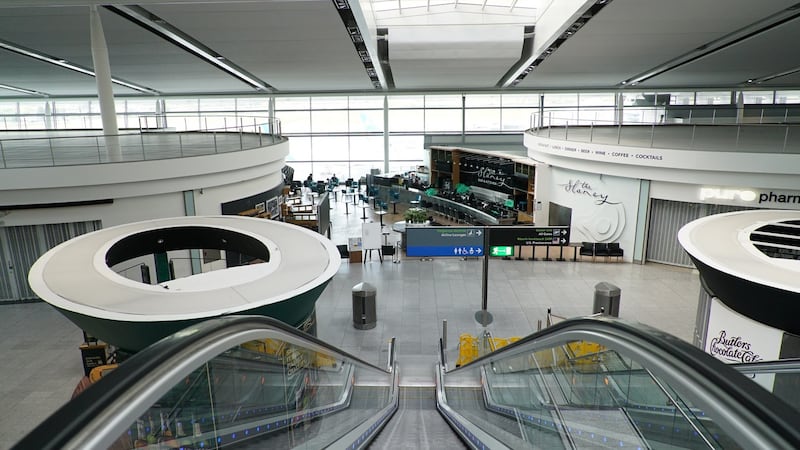Today is my last day of restricted movements. I had to go to England a fortnight ago, did a very quick turnaround and headed straight back into rural semi-isolation. A few days earlier, my son, his partner and their little boy had returned to Copenhagen from a similarly restricted visit to us in Ireland. So between us, around the same time, we went through two different systems for handling arrivals. The comparison was not reassuring.
At Copenhagen Airport, as in many international airports in Europe, you can have a test for Covid-19 – no appointment, no fee. There’s a test centre beside the car park. You can walk up or drive in. It’s open seven days a week, from 6am until midnight. The test takes five minutes and you get the results online in less than 48 hours. If you’re too hassled, you can get the test under the same conditions in lots of different places the next morning. Because they were travelling with a baby, this is what my son and his partner did – five minutes, in and out, negative results less than two days later.
Passengers crowded around the stands to fill out their contact details or sat close together on a few chairs at the side
On August 2nd, our Minister for Health, Stephen Donnelly, said there were plans to introduce random testing at Irish airports and to make the locator form that passengers must fill out electronic. I went through Terminal 1 of Dublin Airport 17 days later. Neither was in place.
Before I got to the passport control zone, there was an area with big notices about the passenger locator forms and a number of stands with the forms on them. They also had biros – the same biros for everybody with nothing to spray or clean them with. Passengers crowded around the stands to fill out their contact details or sat close together on a few chairs at the side. We handed the forms in at passport control. It may be an unfair impression, but it did not feel to me that this was anything other than a ritual.
Surprising omission
Nobody checked the form and nobody has been in touch since to see whether I have been at the address I wrote on it. This is surprising because, as of August 10th, there was supposed to be a whole new call centre operation for tracking arriving passengers in place. It was announced in response to the revelation, on foot of a Dáil question asked by Róisín Shortall, that just 7 per cent of declarations by incoming passengers from non-green list countries were being followed up and that only half of them were answering their phones when called.

Now, it may well be that, as of last week, the tracking operation has greatly improved. Last Wednesday the Government finally got around to creating an online passenger locator form, which should make it much easier to send people information and check on their whereabouts. But it is not as if the internet was invented yesterday. The Oireachtas committee on Covid-19 response was told in July that the electronic system was going to be ready in “early August”. It got going on August 26th. It is baffling that it took so long to create a system not reliant on bits of paper and shared biros.
As for testing, though, Dublin Airport’s advice on its website has the virtue of clarity: “We are currently not carrying out tests for Covid-19 on passengers at Dublin Airport.”
Early days
On July 28th, Ray Gray of Dublin Airport Authority was asked by Duncan Smith at the Oireachtas committee about what discussions the DAA had had with the HSE, the Department of Health or the Government on the practical provision of a testing regime at the airport. He said: "We are actively examining the capability of putting in testing at the airport. However, I should say at the outset that the capability for testing today is very limited in this country. There are a relatively small number of parties that could operate a testing facility at the airport, and these are very early days. Second, the number of tests that could be handled, physically, at an airport would be restricted."
Four different government departments have been involved, and for a long time they passed responsibility between them
Leave aside the startling definition of “very early days”. Why is testing capacity so “very limited” in Ireland? Why can Copenhagen and many other European airports have a testing facility in the (now largely empty) car park while Dublin cannot?
One answer is by way of another question: whose job has it been to get this done? Four different government departments have been involved – Foreign Affairs, Tourism, Justice and Equality, and Health – and for a long time they passed responsibility between them. This is exactly what is not supposed to happen in a national emergency and exactly why the State had put in place a system of crisis management under the National Emergency Co-ordination Group to ensure an “all-Government” approach.

That system was simply ditched without explanation when the pandemic arrived. All policy has come down from the National Public Health Emergency Team, a fine body but one with an inevitably limited view of what's happening. As an immediate crisis has become a semi-permanent state, a much wider set of perspectives and a lot more joined-up thinking are urgently needed.














